When an invention is developed as part of an employment contract, the employee is entitled to additional remuneration on top of his or her salary. This is an obligation incumbent on the employer to register the patent, or to exploit it when a license has been agreed between the employer and the employee-owner. To better understand the subtleties of the employee invention regime, we explain the situations in which this remuneration is required, and how to calculate it.

Patent rights
Having the right to a patent means being entitled to apply for one. A patent gives its owner a monopoly on an invention. It is an exclusive right. The owner may license the invention to other individuals or companies.
For a company, having a patent means not only protecting an invention, but also securing its entire business by being able to fight against acts of counterfeiting.
The two situations in which the employer is entitled to a patent
If the invention is the result of an inventive mission defined in the employment contract, or ofstudies or research explicitly entrusted to the employee (whose function is to create innovation), the patent right is attributed to the employer. This is referred to as a“mission invention”. Since the employee’s function is to innovate for the company in return for a salary, ownership of the invention systematically reverts to the employer.
On the other hand, aninvention outside the scope of an attributable mission is said to have been made when the invention was not part of an employment contract involving an inventive mission, or in the context of studies or research entrusted on an occasional basis, but remains within the company’s field of activity, or was made thanks to the knowledge or use of specific techniques or means provided by the company. The employee is the owner of the invention, but the employer can assign it to himself through a right of attribution (ownership of the invention), or through an exploitation license if the patent application has been filed by the employee inventor, in return for payment of a fair price.
Can the employee be the sole owner of the invention?
The employee is therefore the sole owner of his invention when it does not fall within the scope of attributable inventions or non-mission inventions, or when, although it falls within the company’s field of activity or has been produced thanks to the knowledge or use of specific techniques or means provided by the company, the latter does not make use of its right of attribution, and leaves the employee free to dispose of his invention.
Employee invention regime
| Qualification | Contents | Diet |
| Invention of mission | Invention carried out by the employee but:Existence of an employment contractcontaining an inventive mission and actual duties or studies and research explicitly entrusted to the employee by the employerExistence ofa hierarchical prescription with the employer, who orders, prescribes, the carrying out of a study and research mission in return for payment of a salary | Patent rights: EmployerEmployee: claim for additional remuneration (mandatory) |
| Off-mission invention: Attributable | Invention made by the employee but:In the course of the performance of his/her dutiesOUIn the company’s field of activityOUWith the knowledge or use of techniques or means specific to the company, or data provided by it | Patent rights: EmployeeEXCEPT in case ofEmployer’s decision to grantEffect: Employer must pay a fair price to the employee in order to obtain the invention. |
| Off-mission invention: NON-attributable | All inventions outside the above categories | All other inventions belong to the employee |
The employee’s obligation to receive additional remuneration
According to a study carried out by the Institut National de la Propriété Industrielle (INPI) in companies with a system for remunerating employee inventions, two systems are most often applied:
- The introduction of a lump-sum bonus system
- The implementation of a system involving both the payment of lump-sum bonuses and remuneration linked to the exploitation of the invention.
These lump-sum bonuses can be paid in several instalments, at key moments in the life of the invention (invention declaration, filing of the application, extension abroad, granting of the initial patent…).
Calculation of the lump-sum bonus for the employee
To calculate the amount of the lump-sum bonus, companies take into account a number of criteria, such as comparable practices in the same sector, the provisions of collective agreements or the company agreement on which they depend, but also sometimes the economic interest of the invention, the difficulty of developing it or the degree of intensity of the innovation, etc…
Remuneration for the exploitation of the invention is usually correlated to the invention’s sales or the difficulty of developing it, but the inventor’s personal contribution, the savings made by the company, or the amount of royalties received can also be taken into account in the calculation.
